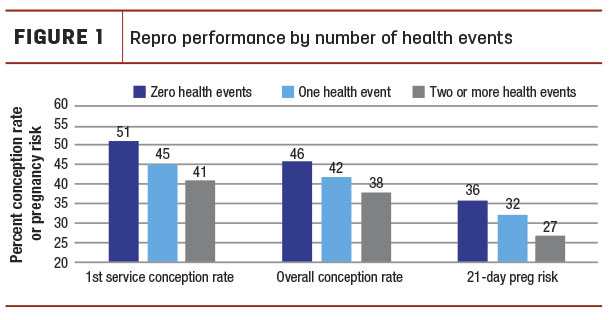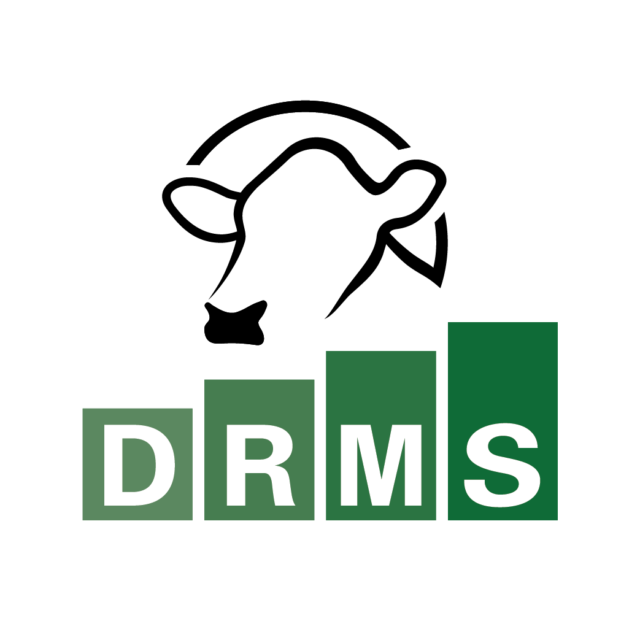It begins before you enroll a cow on a synchronization program or start monitoring heats using an activity system. In fact, successfully creating a pregnancy starts before a cow enters the maternity pen.
It starts before calving
It’s no secret that transition, fresh cow and overall herd health all play key roles in a cow’s capacity to be a profitable member of your herd. Only cows that receive proper care and nutrition throughout their transition period and at calving have the chance to become the next four-event cows of your herd. A four-event cow is one that records just four major events in her lactation: fresh, bred, confirmed pregnant and dry.
Of course, maintenance events like pen moves, foot trims, vaccinations and pregnancy re-checks also occur during a cow’s lactation. But when fresh, bred, pregnant and dry are the only four major events in a cow’s lactation, chances are she’s a profitable part of your herd.
In this case, we’ll look closer at the first three events: fresh, bred and preg. You’ll see that getting a cow off to the right start after she freshens truly affects her ability to cruise on through those first three major events with no issues.
Numbers don’t lie
We know a cow’s reproductive efficiency is impacted by her health and welfare in the transition and fresh cow periods. We wanted to know to what extent. So we did our research.
We dug into the herd health and reproduction records on 10,000 cows from three different dairies throughout the U.S. These herds operate at a very high level of management and keep accurately detailed records on all health events in their herds.
We sorted the cows from the three dairies into three different groups. We assigned each cow to a group based on the number of detrimental health event setbacks she had: zero, one or more than one. By detrimental health events, we mean the ones that cost time, labor and money – including fresh cow events like milk fever, retained placenta, metritis, displaced abomasum (DA), ketosis and also mastitis.
We then analyzed first-service conception rate, overall conception rate and 21-day pregnancy risk per group. Figure 1 illustrates what we found.

Fewer events equal superior repro
It’s easy to see the trend. Cows with zero health events have higher reproductive performance than cows with one and two or more health events.
It’s also important to note that more than 76% of these events happened in the first 30 days in milk (DIM). That emphasizes the importance an animal’s health and welfare throughout her transition and fresh cow periods plays on her ability to become a profitable four-event cow. Cows that get the best start to their lactation, before and after calving, are much more likely to be bred on time and confirmed pregnant after just one service.
The cows that had healthy, trouble-free transition and fresh cow periods went on to have 6% higher first-service conception rates than cows with just one health event and 10% higher first-service conception rates than cows with two or more health events. That proves the obvious: Cows not experiencing detrimental health events, especially in the first 30 days of their lactation, are more likely to get bred back sooner.
What changes are you willing to make to get a 10% jump in first-service conception rate?
For the skeptics
You might be thinking that even a 41% first-service conception rate and a 21-day pregnancy risk of 27% in the group of cows with multiple health events is still quite impressive. Those numbers come from the high management level at which all these herds operate.
It’s more important to recognize the difference in reproductive performance between the multievent cows and the healthy, trouble-free cows with zero events. A 10% conception rate difference and a 9% pregnancy risk difference is huge.
To take it one step further, we calculated the average annual 21-day pregnancy risk across all three herds at 32%. That means the group of cows with multiple detrimental health events falls 5% short on repro performance as compared to just the average.
What can you do with this info?
Creating a pregnancy starts long before you inseminate the cow. If your reproductive performance is not hitting your goal, then work with a trusted adviser to analyze your herd’s transition and fresh cow health.
If you have too many cases of those fresh cow illnesses, they cost more than the time, labor and money you’re putting in to treat them. They’re impacting your herd’s overall reproductive efficiency.
Put a plan in place to address areas of opportunity in the transition and fresh cow pens to see benefits that extend to your reproductive success. When fresh cow health and welfare are front-of-mind, you’ll create more of those four-event cows that freshen with no troubles, are bred just once, are confirmed pregnant after just one service and go dry with no other health issues. ![]()

-
Ben Voelz
- Premier Account Manager, U.S.
- Alta Genetics
- Email Ben Voelz






